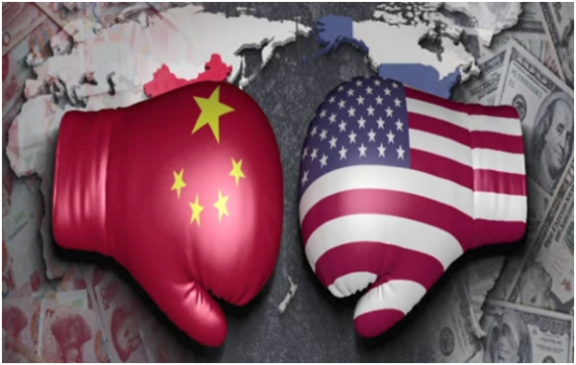South Korea Stuck in U.S.-China Hegemonic Rivalry

The U.S.-China hegemonic rivalry is taking a heavy toll on Korean companies.
The international division of labor in the electronics and information and communications technology (ICT) sectors is cracking as U.S.-China disputes are becoming more and more intense. With the two superpowers raising their barriers by making astronomical investments, South Korean companies are being compelled to duplicate their investments for individual responses and losing their overseas markets.
The collapse of the global value chain is ongoing in sectors such as semiconductor and 5G communications. Qualcomm is having a hard time supplying its 5G smartphone chips due to U.S. restrictions on Huawei. TSMC decided not to receive orders from Huawei and the Chinese company is on the verge of giving up the production of KIRIN 890 within this year. Conflicts between the United States and China are also being witnessed with regard to software and online platform services such as the Android operating system, Facebook, WeChat and TikTok.
“Increasing U.S. restrictions in the field of advanced technology are likely to cause China to invest more in technological development and independence, and then a China-led economic bloc based on its technological standards will be set up and the world will be divided into those siding with and against China,” the Korea Development Institute explained, adding, “Then, South Korean companies will lose their competitive edge and will have to duplicate their investments in order to meet the standards of the United States and China.”
China is currently moving ahead with a plan to become a manufacturing powerhouse within five years to come and lead the global manufacturing sector from 2036 onwards and the United States is trying hard to keep it in check. In other words, their technological cold war is unlikely to end within years. Higher market entry barriers and contracted business in China are inevitable results of the war for South Korean enterprises.
Both the United States and China have made huge R&D investments since even before the war. For example, the United States spent US$496 billion and China spent US$408 billion on R&D in 2017 alone and their spending accounted for no less than 47 percent of the global total R&D investment that year. China’s investment to that end is estimated to top US$500 billion this year and reach US$600 billion in 2024.
The possible consequences of the race include South Korean companies’ lost technological competitive edge. The United States is trying to standardize as many next-generation technologies as possible and change global markets based on the technologies in order to keep China at bay. For instance, the United States is planning to occupy the global 6G communications market ahead of China with Chinese companies such as Huawei already dominating the global 5G equipment and device markets. Then, South Korean enterprises that commercialized 5G for the first time in the world and are increasing their shares in related markets will have to make large investments even before recouping their previous investments.